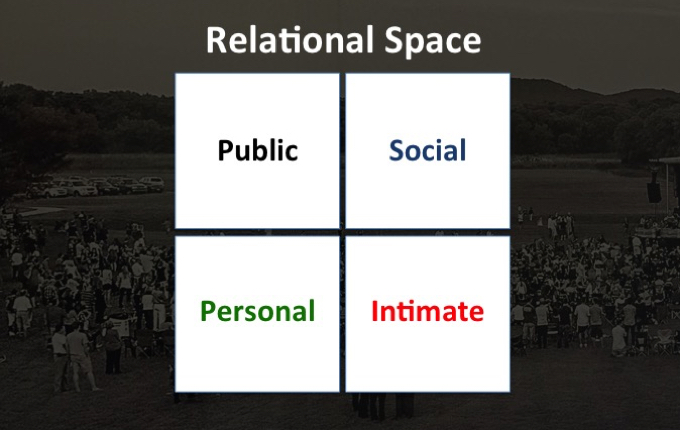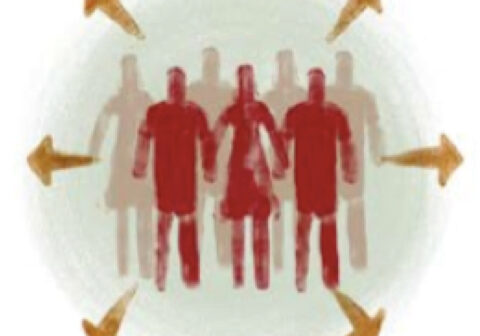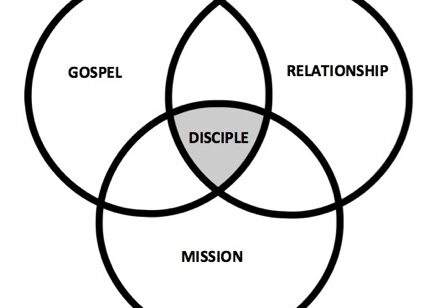Earlier this year I started what I called “Connection Conversations” with various leaders at Fellowship to introduce some new concepts to make it easier to connect at Fellowship. Some of these concepts are foundational biblical concepts and some are cultural concepts. Below is an introduction to one of the cultural concepts that we think will make Fellowship an easier place to connect.
I’d like to extend this conversation to you. So, after reading this let me know what you think about this concept.
Relational Space 101 –Introduction
The concept of “Relational Space” has been around for several decades. If you’ve ever heard someone refer to his or her “personal space”, then you’re kind of already familiar with it. The idea is that our relationships occur in four spaces: Public, Social, Personal and Intimate.

Public is the largest space. It’s like a vast open field with only the horizon in either direction as a boundary. There can be multiple relationships in this space; even some we are not aware of. You may have some relationships in this space with people who do not know you even exist. For example, I’m a humble college football fan of a little school down south with 15 National Championship Titles. I wear their gear and DVR every game to re-wind amazing plays (Hello Georgia!) and fast-forward through part I don’t want to see (Like the 2013 Auburn game). I doubt anyone on the University of Alabama football team knows me, but I’m still in a loyal committed Public relationship with Alabama –Roll Tide!
The second space is Social. Unlike Public Space, Social Space is a defined space. Social space is like a big ballroom with sections filled with several tables and chairs, but there are walls. You can stand at the edge of the room and take it all in. You can also choose to focus on a section of the room. Or, you can sit at a table in the room and be with a few people. So, you can see there are unique dimensions to navigate within Social Space –Large (the scope of the room), mid-sized (a section or group of tables in the room), and small (sitting at one of the tables).
Then, there is Personal space. This space is smaller and more (dare I say it?) “personal.” This space will only hold a limited number of people –say 10 to 12 at one time. It is a smaller, more finite space and unlike the social space, it has more of an “invitation only” feel to it. You can’t just stumble upon this space – you need to be invited.
Finally, there is Intimate space. The name alone tells you about this space. This is the smallest finite space. In all the other spaces, touch is optional – however Intimate space is so small, touch is assumed. Let’s be clear that this is not limited to eros/marriage relationships – although these relationships may occupy in this space. This is about limitation and permanence. People can move in and out of the other three spaces, but people who we invite into Intimate space can remain in this space even when they are not physically present with us or on this side of Heaven.
Let’s review, Public Space is a vast open area where we may have relationships we don’t even know about –but still feel committed (Granted, some may have a fanatical strange commitment –you know like Auburn fans). Social Space is a ballroom, a defined space with various dimensions to navigate: Large, Mid-sized and small. Personal Space is a smaller, “invitation only” and finite space. Intimate Space is the smallest, finite space with a strong level of permanence.
In upcoming articles we’ll take a deeper look at this concept and unpack how it helps people connect. If you have questions and comments please let me know. You can reach me at . I would like to know what you think about Relational Space.
Mark Holeman
Connections Pastor




